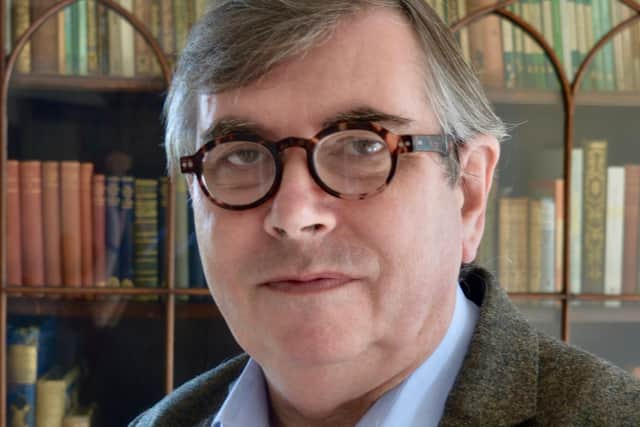Book review: Traditionalism: The Radical Project for Restoring Sacred Order, by Mark Sedgwick
Here is a peculiar question: what do King Charles III, the composer John Taverner, Steve Bannon and Putin’s so-called court philosopher, Aleksandr Dugin have in common? Yes, they are all men; but they have all also advocated and been influenced by traditionalism. You might have heard about, even if you did not quite understand, existentialism or utilitarianism or logical positivism – but traditionalism is something apart. In many ways its defining feature is the ability to stay below the radar, if not exactly in the shadows. This very fine book is a forensic look at the movement and its influence, and has several points where you both realise something and ponder “why did I never realise that?”
Who were the traditionalists? In some ways one answer is that there have always been traditionalists. But as a philosophy it was articulated by three thinkers: René Guénon, Julius Evola and Frithjof Schuon. They make for quite an eclectic triumvirate. Guénon was born in 1886 and was the author of, among other books, The Crisis Of The Modern World. Evola was born in 1898 and wrote Revolt Against The Modern World. Schuon was born in 1907 and wrote The Transcendent Unity Of Religions. None of them would claim to have invented or made up traditionalism; rather, they discerned something fundamental that had always been known. So what are its major features?
Advertisement
Hide AdThe first is perennialism, the idea that all religions have a common basis. There is “one single, timeless and esoteric sacred tradition”, a “golden chain” through the ages. I find this somewhat problematic. The notion that there is a singular message that goes through the Vedas, the Tao, the Buddha, the Torah, Pythagoras, the Gospels, neo-Platonists and a heck of a lot more seems to me quite unfair on cave-people. Did they not have a spark of the immutable wisdom? (I have no doubt that some people will look at the cave paintings and rock carvings and say they too are part of the perpetual tradition).


The second string is that this knowledge is reserved, mostly, to elites. It is esoteric. The exoteric has its role, but having your posterior on a pew or being on your knees in the mosque is just a pabulum for those who can’t cope with the arcane, hidden underpinning. The final part is the most conspicuous. For what was a relatively modern phenomenon, albeit one which was contemporaneous with the spiritualism of Blavatsky and Gurdjieff and the Satanism of Crowley, the Traditionalists were all very anti-modern. Basically, everything had gone to heck in a handcart in their view. Profoundly, they did not believe in progress; the Renaissance, the Enlightenment and the Industrial Revolution were all rotten in their own degrees. The world had lost the sacred, the heroic and the sublime, but they had winkled out the lost tradition that would restore us to fullness.
But they expressed this in very different ways. Guénon studied philosophy and Hinduism at the Sorbonne, but his thesis was dismissed as being rather too out-there. He eventually went to Egypt and became a Sufi. Schuon was perhaps the most sympathetic to orthodox religion. He had a vision of the Virgin Mary, became interested in North American shamanism, and also found Sufi traditions attractive. Evola is an outlier among them. Giolio, who renamed himself Julius, adding that he was a Baron and also having “Dadaist painter” on his CV, then decided to support Mussolini and Hitler. Even after the end of the war, he was inspirational to Italian neo-fascists. Of the three, Guénon is the most quietist, Schuon the most traditional traditionalist, and Evola the most contentious.
Traditionalism is a very fractious movement. There are things of great virtue in its adherents, particularly in terms of inter-faith dialogue and ecological awareness. Yet it also has strains of hierarchical and aloof thinking. On one hand, Guénon was fascinated with both secret societies such as Freemasons but also with craft guilds, who passed on intergenerational knowledge. Schuon has his own following and devotees. Evola was far keener on the idea of chivalric knights and an almost conspiracist, cloak-and-dagger position. So it does seem that it is not that much of a surprise that both the Poundbury of Charles III, the mysticism of Taverner, the disruptive antagonism of Bannon and the reactionary retrenching of Dugin can all be bundled under the same banner.
Sedgwick is astute on how these different streams branch out from the same spring, and as acute on the tides and swells that may be ahead. Is traditionalism actually a philosophy, or a theology, or a cranky set of notions? The answer may well be “all of the above”. But that sense that “the time is out of joint”, that we have become too materialist and superficial, that there was once a better time, that religions have more in common than that which separates them – all these things chime true. As with Ruskin, Marx and Carlyle, traditionalism seems to be united in the diagnosis of the problem but all over the place on the treatment.
Traditionalism: The Radical Project for Restoring Sacred Order, by Mark Sedgwick, Pelican, £25